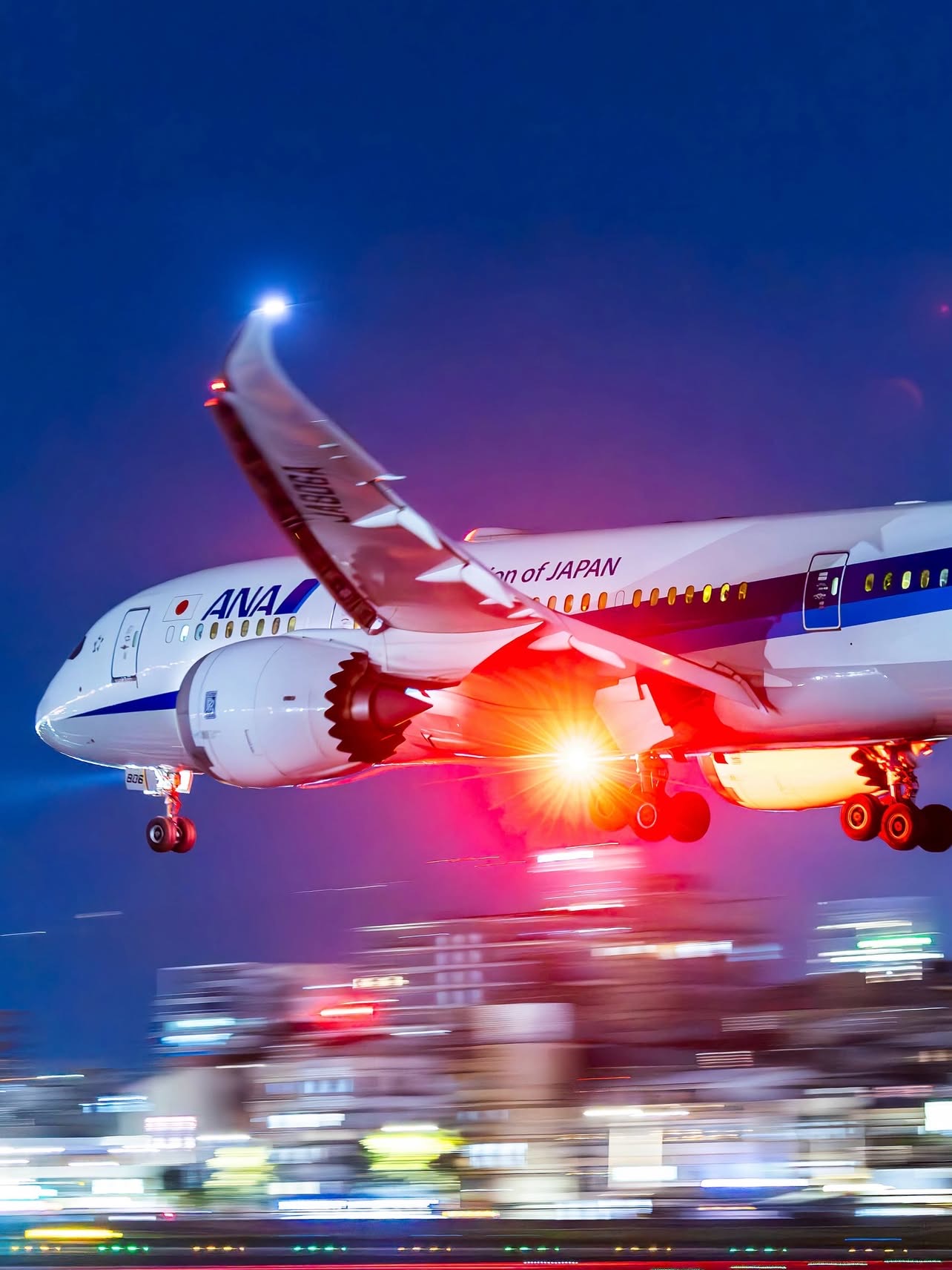Boeing 787 is a medium-sized, twin-engine, wide-body and long-range advanced jet airliner developed and produced by Boeing. It is named "Dreamliner", which represents the revolutionary concept of passenger aircraft design in the 21st century.
Core features and innovation
The biggest highlight of the 787 is that it adopts a large number of composite materials and technological innovations, aiming to significantly improve efficiency, comfort and environmental protection performance.
1. A large number of applications of composite materials
About 50% of the fuselage structure of the 787 is composed of carbon fiber composite materials (including the fuselage and wings), which is a milestone in the history of civil aviation. Compared with traditional aluminum, composite materials have:
· Lighter: Greatly reduce the weight of the aircraft, thus reducing fuel consumption and operating costs.
· Stronger: Better fatigue and corrosion resistance, prolonging the life of the aircraft.
· Stronger plasticity: It allows the design of more aerodynamically efficient wings and more spacious cabins.
2. Excellent fuel efficiency and environmental protection performance
Thanks to the lighter body, advanced engine and streamlined design, the 787 saves about 20% of fuel consumption compared with previous aircraft of the same size, such as Boeing 767. This not only saves a lot of costs for airlines, but also reduces carbon emissions and noise pollution, making it a more "green" aircraft.
3. Revolutionary cabin experience (the most intuitive feeling for passengers)
· Larger port windows: The windows of the 787 are 65% larger than those of traditional aircraft, and there is no sunshade, but the brightness and dark of the window color can be adjusted through electrochromic technology (5 brightness levels), and all passengers can enjoy the scenery outside the window.
· Higher cabin air humidity: The composite fuselage is not easy to corrode, allowing the cabin air humidity to be raised to a higher level (about 15%), reducing passengers' dry mouth and fatigue during long-distance flights.
· Lower cabin pressure height: The cabin pressure height of the 787 is set to about 1,800 meters, while the conventional aircraft is about 2,400 meters. This means that passengers' blood can absorb more oxygen, effectively reducing the headaches and discomfort caused by long-distance flights.
· Smoother flight: The 787 is equipped with "Gust Suppression System". When turbulence is detected, the wing control surface will automatically fine-tune to effectively reduce bumps.
· Dynamic LED scene lighting: The large luggage rack and LED lighting system at the top of the cabin can simulate the natural light color at different times such as sunrise and sunset, helping passengers adjust the biological clock and reduce the impact of jet lag.
· More spacious space: Although the width of the fuselage is similar to that of 767, 777 and other wide-body aircraft, through the optimized interior design, it feels more spacious, and the middle luggage rack is also larger.
4. Advanced engine
The 787 is equipped with two of the world's most advanced turbofan engines: General Electric's GEnx or Rolls-Royce's Trent 1000. Both engines adopt high culvert ratio and more efficient design, which is the key to their low fuel consumption and low noise.
5. Advanced avionics system
The 787 adopts a fully glassed cockpit and a large multi-function display, which greatly improves the pilot's situational perception ability and reduces the workload.
---
Model series
There are three main models of 787 to meet the needs of different routes:
1. 787-8:
· Basic model, standard three-level cabin layout download about 242 passengers.
· The range can reach 13,620 kilometers (7,355 nautical miles).
· It is mainly used for point-to-point medium and long-range routes.
2. 787-9:
· The extended model of 787-8, with a body length of about 6 meters, is the best-selling model.
· The passenger capacity is larger, about 290 people (three-level layout).
· The range is further, up to 14,140 kilometers (7,635 nautical miles).
· The best balance has been achieved between passenger capacity and flight range.
3. 787-10:
· The largest model in the series, the fuselage is about 5.5 meters longer than that of the 787-9.
· The largest passenger capacity, about 330 people (three-level layout).
· The range is slightly shorter, 11,910 kilometers (6,430 nautical miles), but it still far exceeds many traditional wide-body aircraft.
· Mainly for high-density and regional international routes (such as inside Asia, within Europe, and transatlantic routes).
---
Basic parameters (take 787-9 as an example)
Project Parameters
The body length is 63 meters
Wingspan 60 meters (with elegant wing tips)
Typical number of seats 290 (two-class cabin)
The maximum range is 14,140 kilometers
Cruising speed Mach 0.85 (about 903 km/h)
Engine General Electric GEnx or Rolls-Royce Trent 1000
The maximum take-off weight is about 254 tons
Sum up
The Boeing 787 "Dream Airliner" is not only a new plane, but also represents a leap in the concept of air travel. Through all-round innovation in materials, pneumatics, engines and cabin environment, it has successfully achieved:
· For airlines: extremely high operational economy and route network flexibility (can open up previously uneconomical direct routes).
· For passengers: the unparalleled comfortable flight experience has greatly improved the fatigue of long-distance travel.
· To the environment: lower fuel consumption and noise pollution lead the new direction of green aviation.

